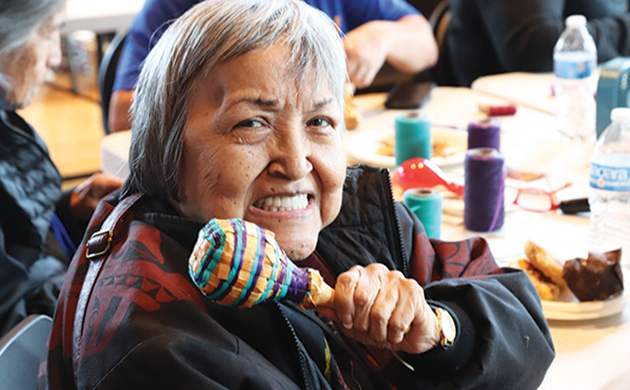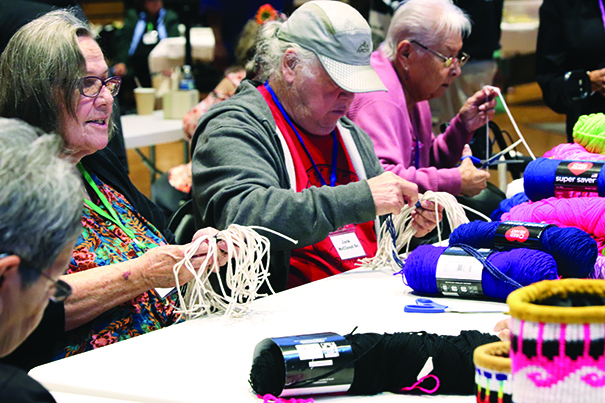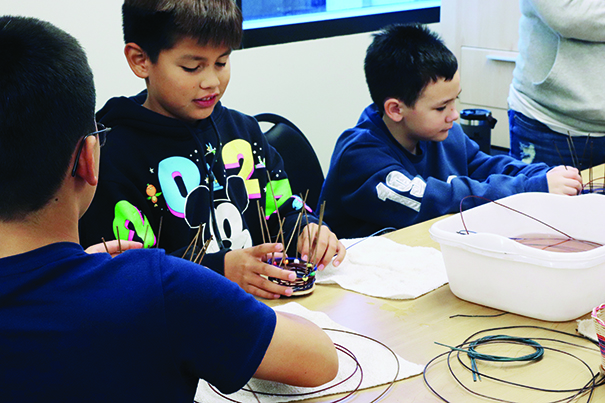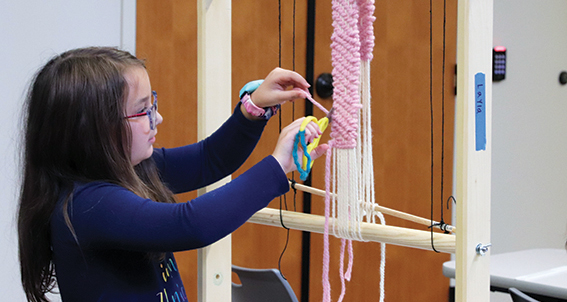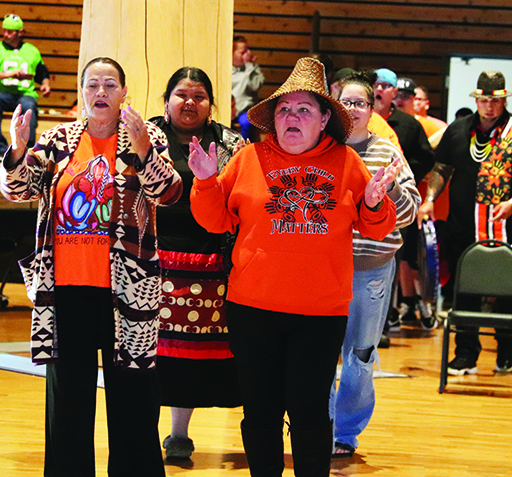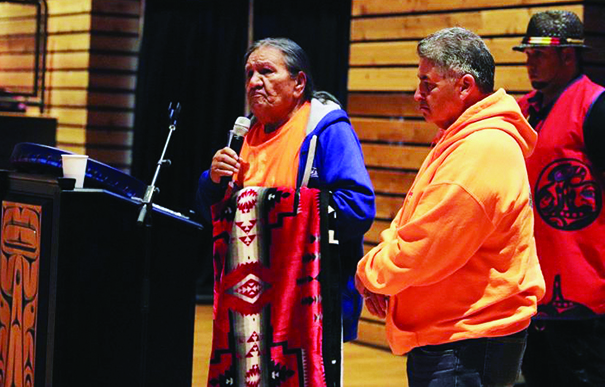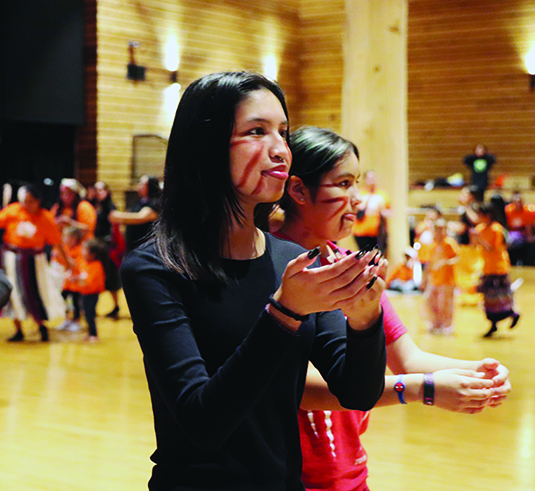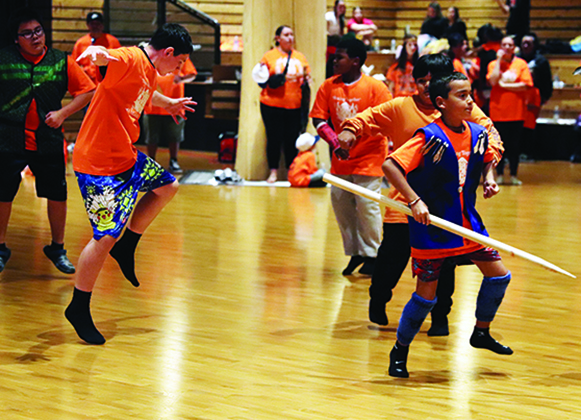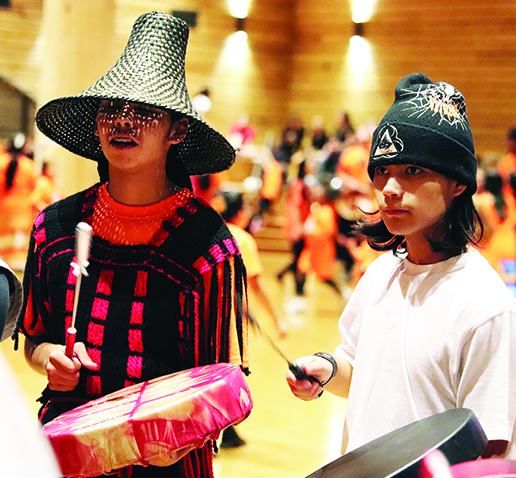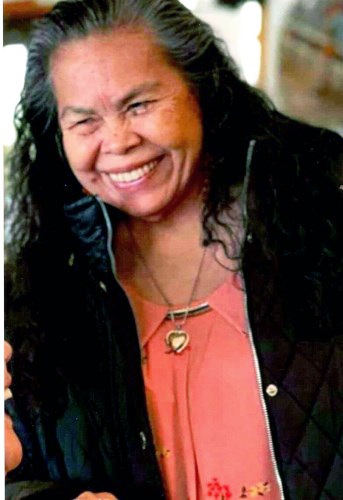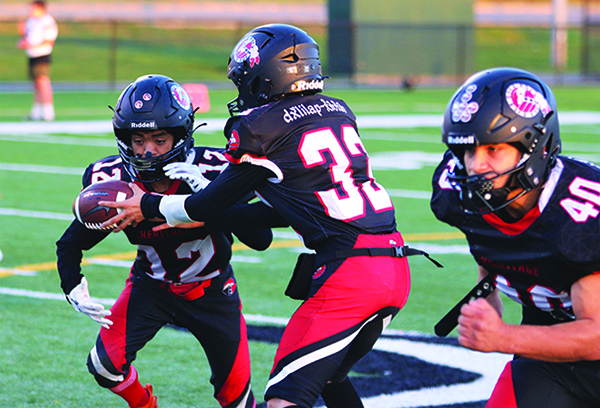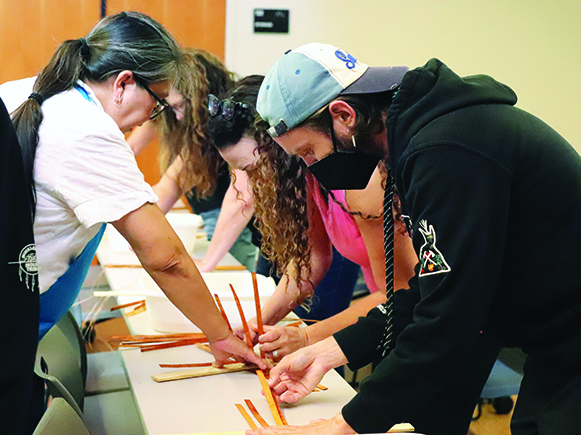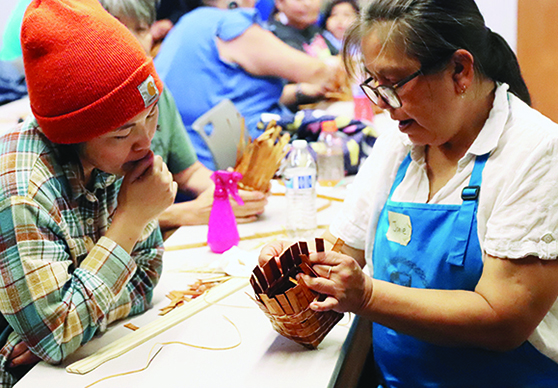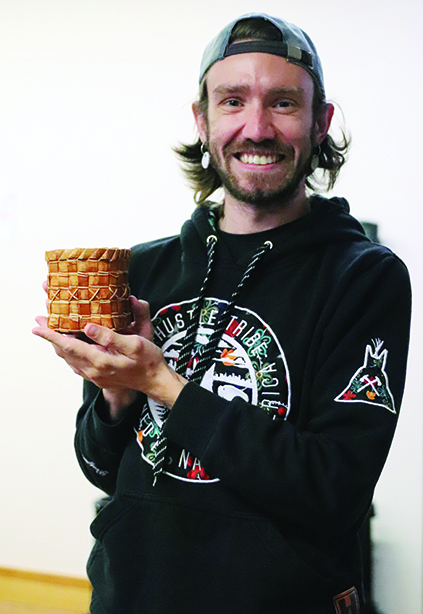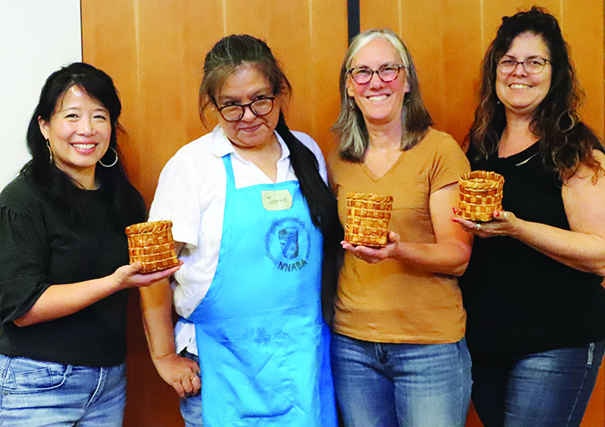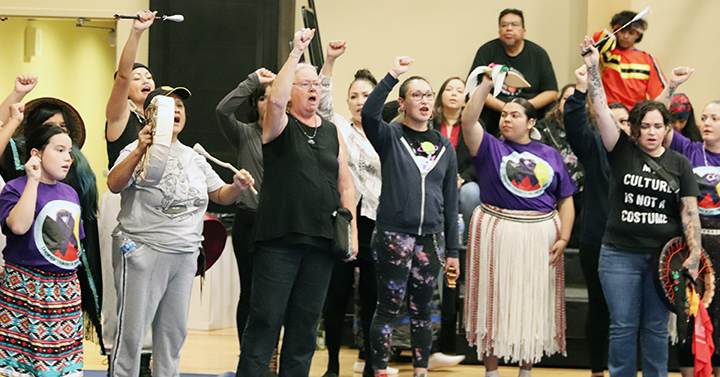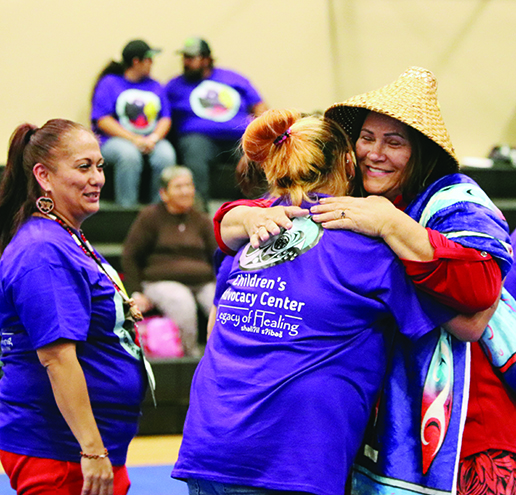
By Kalvin Valdillez, Tulalip News
“We have to be able to grieve. We have to be able to process loss,” said Nola Jeffrey. “And there’s many ways that we could do that – you can go to therapy and talk to someone, and that does help. But I’d rather do ceremony, I’d rather go to the water, I’d rather go into a sweat lodge, I’d rather sit in a circle with our people and talk to them. Because what you’ll find is that we share things in common, and in that, it gives us strength.”
A sage bundle burned atop an abalone shell at the entrance of the Gathering Hall. As people arrived, they took a moment to ground themselves, guiding the fragrant vapors from head to toe, cleansing their bodies and spirit before stepping into the Hall on the evening of October 7.
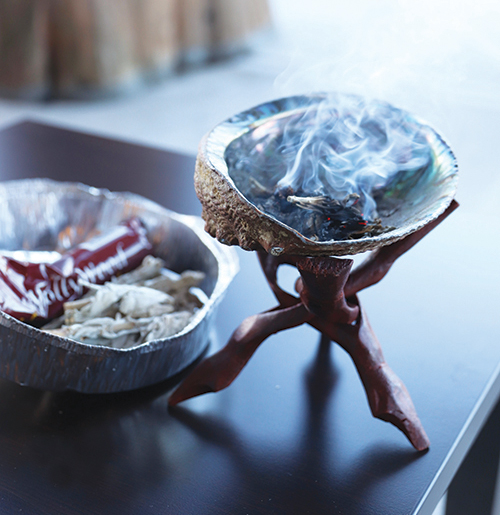
At the start of September, the Tulalip Tribes introduced an initiative to the community dubbed the Season of Healing. Since then, the Tribe has organized a number of gatherings aimed at healing the mind, body, spirit, and heart of its membership, and also of the citizens who work for the Tribe or live on the reservation. Through TED-Talk-esque panels and traditional art projects, the people have been absorbing the knowledge and teachings shared at these events with the intention of applying it to their own healing journey.
Tulalip Board of Director, Theresa Sheldon, explained, “The Season of Healing came about to the BOD, really from the community saying that they want to address trauma. We put together eight Mondays of speakers, eight Saturdays of art to talk about hard issues and work through them at the same time. Having speakers come from outside the community to talk about things that impact you, in a safe environment, is really the intent and purpose of us doing that. And then working on art projects so we can then get it out. Art takes a different piece of your brain and a concentration of peace and balance that we don’t use when we’re in fight or flight. It was an intentional combination to have speakers and art together.”
The latest installment of the Season of Healing focused on dealing with grief and loss. According to a recent study by the CDC, American Indian and Alaskan Native males had the highest death rate in 2022 with 1,444 deaths per 100,000 population. And AI/AN females were not far behind with a total of 1,063 deaths. These statistics are staggering considering that most other races had a death rate below 900 per 100,000 people. That is 40% higher than the white population, 17% higher than the black community, and 98% higher than Hispanics.
Delving a bit further, the U.S. Department of Health and Human Services’ Office of Minority Health reported that the life expectancy for Natives is an average age of 71.8 years, compared to an average of 78.8 years for whites, 74.8 years for black people, and 81.9 years for Hispanic individuals. But even without knowing any of those stats, many Native people could relate this to you simply from experience, by recalling upon the names and memories of all the loved ones we’ve laid to rest.
“I think that as Native people, we do funerals really well,” Theresa stated as tears began to well up in her eyes. “And I think after the funeral, we don’t know what to do. I think we don’t talk about it enough. We don’t talk about the foreverness that we carry as long as we’re still here. That loss we have, we’re just expected to know how to deal with it.”

After receiving an event t-shirt that read, ‘reclaiming joy, love, and laughter’, attendees shared a meal together before the panel began. Taking their seats at the head of the Gathering Hall, the people participated in some mindful mediation and breathing exercises, led by Tulalip community member and LMP, Glendy Morrison.
On the main stage, three chairs were occupied by Tribal member and event emcee, Kali Joseph, moderator and Tulalip BOD Debra Posey, and guest speaker Nola Jeffries (Tsimshian/Coast Salish). Nola is well known amongst tribal communities, and she has leant her voice and efforts to the health and betterment of Indigenous people at gatherings such as the Tribal Canoe Journey and at various National Day of Truth and Reconciliation events across Indian country.
During this intimate gathering of about 50-60 Tulalip community members, Nola spoke from the heart. She shared her personal experience with grief and how she was able to cope and withstand the lowest point of her life, the loss of her daughter Megan, who aged just 20 months before her untimely passing.
“My daughter died in a car accident that I was very much a part of,” she stated. “Having this beautiful little girl who was so full life, full of love, full of energy, and full of promise, to be gone – my whole life changed in a second. As a mother, I thought it was my responsibility to keep all my children safe and that day I didn’t succeed. I blamed myself. Sometimes, you can turn your anger onto somebody, but I drew that anger inward. I didn’t feel I deserved to be a mother, a wife. I didn’t feel like I deserved to even grieve for her because I caused this to happen.
“It’s hard for us to grieve. What grief can do is stop us dead in our tracks and I think that’s what happened to me. I had a really hard time staying here. It was my own mother who probably helped me stay here. She called me and told me she was worried about me, and that if anything happened to me it would kill her. And a little lightbulb went on in my brain. I would purposely cause my mother this pain. I would purposely make her suffer. I thought to myself I can’t do that; I have to somehow live through this. There were times I couldn’t look ahead, because the pain was so deep. And what I would do is stuff it down. Of course you can’t stuff all that pain down. For me, it felt like I had a manhole over that pain, and it would get so full, it would be like a geyser. It would start coming up until I’d get control of it again and push it back down. I lived my life like that for a long time. I’d pretend I was happy, people thought I was happy, but I wasn’t. I was struggling. There were lots of beliefs I held that just weren’t true, because I really wasn’t responsible for my daughter’s death. I was part of it. One day I woke up and thought, Nola, you’re not the creator. You can’t make all these things happen. You’re not in control of any of this.”
Nola went on to explain that she officially set off on her healing journey 11 years after her daughters passing. Upon accepting a position at a substance use and trauma treatment center named the Tsow-Tun Le Lum Society, she was introduced to new forms of therapy which helped her through that pain and gave her a new perspective on grief, in addition to traditional work.

She said, “I believe that things are supposed to happen the way that they happen. We have a time to be born, and we have a time to go. Sometimes it’s really hard to accept some of the things that have happened. I used to think that if I accepted it, then I agreed with it – I realized I was just fighting myself. I couldn’t change what had happened. I still have grief, but the way I live with my grief is different. I didn’t think I had the right to cry, and today I absolutely know that my tears are welcome. Even though she is on the other side, she’s still my daughter. That love never dies. I still talk to her. She’s still a part of my life, I still love her so much. And she has taught me so much. What I didn’t know before she came and left was how incredibly strong I am. But I’m going to be honest with you, 35 years have passed and sometimes it feels like it was yesterday. I still miss her.”
Many tears were shed in the Gathering Hall that evening. When hearing Nola recount her story, nearly everyone in attendance could be seen nodding in understanding and relating to those feelings of hopelessness, guilt, and despair. And as she continued to detail her experience with loss, they acquired new ways and ideas on how to work through their grief and how to allow themselves to let go.
Following her TED-Talk, Nola opened the floor for questions. Among the two people who came forward was Tribal member, Deborah Parker.
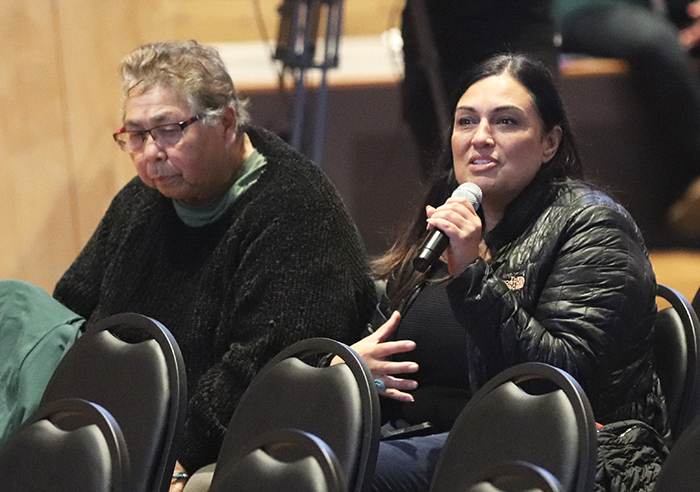
Said Deborah, “I lost a loved one on September 26th – three years ago. It’s really difficult. I get confused with letting go and remembering. They say to let go, but then also to remember your loved ones. I don’t quite know what to do and how to live without that loved one. What did you do to relieve yourself from that confusion in your mind? Because I know that grief and feeling of loss will be forever, in a sense. But I too want to live a more meaningful life because grief has really hit myself and it’s impacted my children, my family, and friends.”
In response, Nola replied, “You said people talk about letting go, and I think what they’re talking about is to start releasing the pain, because that trauma and grief gets stuck in our bodies. That’s what you need to let go of, that’s what you need to release. But the memories of them? Absolutely not. The love of them? Absolutely not. You hold on to that and you allow it flourish and grow.”
Prior to a youth-led closing song and a raffle drawing, that included $50 gas cards and gift bag prizes, BOD Posey concluded the panel with a few insightful remarks, “When you lose someone who you love, and you get to that point where you can start really remembering the best times, when you can focus on those wonderful moments in time, you can ask yourself what would that person want for you? But you have to be really true and honest about it. Would they want you to be isolated and be in grief? And if the situation were reversed, and you were the one that is gone, what would you want for them? And if you know what you would want for them, that’s what they want for you. To live a full life, to find joy, to find happiness, to live the best life you possibly can.”

The Season of Healing will continue throughout the rest of October. The next art project scheduled is a dentalium earring workshop instructed by Tribal member Santana Shopbell-Proehl. It will be held on Saturday October 12, at the Hibulb Cultural Center from 1:00 p.m. – 3:00 p.m. To sign-up for the class, be sure to call (360) 716-2600 or e-mail info@hibulbculturalcenter.org. There will also be an Indigenous Peoples’ Day celebration at the Gathering Hall on Monday October 14, beginning at 5:00 p.m., which will feature Noelani Lokepa-Guerrero as the guest speaker.
If you are a Tulalip tribal member, you can follow the speaker series via livestream on IAmTulalip.com. On this site, you can also find a video recording of all the Season of Healing TED-Talk panels if you were unable to catch the event in real time.
And please remember to RSVP to each of the remaining events at https://app.smartsheet.com/b/form/ce6877abd9f44c969fcfb6cbbb0719aa
